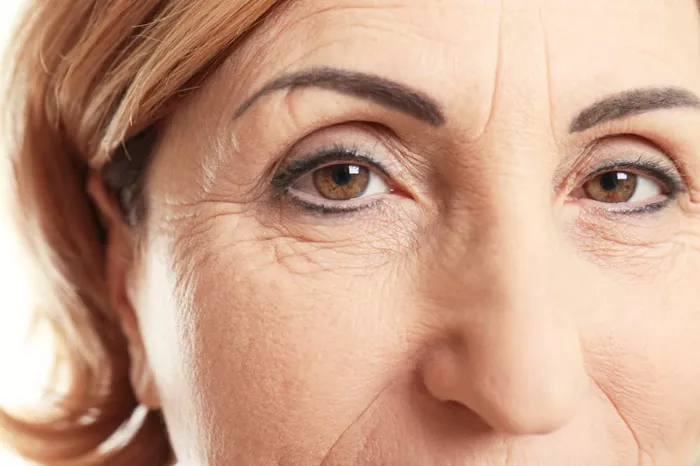Fine lines are often the earliest signs of aging that can make their appearance on our skin. They are a common concern, particularly for those keen on maintaining a youthful look. But at what age do these fine lines typically begin to show? Let’s delve into the world of skin aging, the causes of fine lines, and strategies to minimize their impact.
What Are Fine Lines?
Definition and Characteristics
Fine lines are small, shallow lines that appear on the skin’s surface. They are different from deeper wrinkles and are usually less noticeable. However, over time, they can develop into more pronounced wrinkles if not properly managed.
Common Areas Affected
Forehead: Horizontal lines that can be seen when the eyebrows are raised.
Eyes: Often referred to as crow’s feet, these lines appear at the outer corners of the eyes.
Mouth: Fine lines can develop around the lips, often referred to as lip lines or smile lines.
When Do Fine Lines Typically Start to Appear?
Genetic Factors
Genetics play a significant role in determining when fine lines begin to appear. If your parents developed fine lines early, you might experience a similar pattern. However, genetics is just one piece of the puzzle.
Environmental Influences
Sun Exposure: One of the most significant contributors to premature aging and fine lines is sun exposure. UV rays break down collagen and elastin in the skin, leading to the formation of fine lines.
Lifestyle Choices: Smoking, excessive alcohol consumption, and a diet lacking in essential nutrients can accelerate the appearance of fine lines.
Typical Age Range
Fine lines can start to appear in the late 20s to early 30s. This age range can vary widely based on individual factors such as genetics, lifestyle, and environmental exposure.
Causes of Fine Lines
Loss of Collagen and Elastin
As we age, the production of collagen and elastin—proteins that keep our skin firm and elastic—decreases. This reduction leads to thinner skin and the formation of fine lines.
Dehydration
Dry skin is more susceptible to fine lines. When the skin lacks moisture, it becomes less resilient and more prone to showing signs of aging.
Facial Expressions
Repeated facial expressions, such as squinting or frowning, can contribute to the development of fine lines. Over time, the skin loses its ability to bounce back from these expressions.
See also: Can fine lines under eyes go away?
Preventing and Treating Fine Lines
Skincare Regimen
Moisturizing: Using a good moisturizer helps to keep the skin hydrated and reduce the appearance of fine lines.
Sunscreen: Daily use of sunscreen with a high SPF can protect the skin from harmful UV rays and prevent premature aging.
Antioxidants: Skincare products containing antioxidants like Vitamin C and E can help combat the damage caused by free radicals.
Professional Treatments
Botox: Botox injections can relax the muscles that cause wrinkles, providing a smoother skin appearance.
Dermal Fillers: Fillers can be used to plump up the skin, reducing the appearance of fine lines.
Laser Treatments: These treatments can stimulate collagen production and improve the overall texture of the skin.
Lifestyle Changes
Healthy Diet: A diet rich in fruits, vegetables, and lean proteins can provide the nutrients necessary for healthy skin.
Hydration: Drinking plenty of water helps to keep the skin hydrated and maintain its elasticity.
Avoid Smoking: Smoking accelerates the aging process and contributes to the formation of fine lines.
Embracing the Aging Process
Acceptance and Self-Care
Aging is a natural process, and fine lines are a part of that journey. Embracing self-care practices and focusing on overall well-being can help maintain a positive outlook on aging.
Confidence and Beauty at Any Age
It’s important to remember that beauty comes in many forms, and fine lines are just one aspect of a life well-lived. Confidence and self-assurance are the most attractive qualities, regardless of age.
Conclusion
Fine lines are an inevitable part of the aging process, influenced by a combination of genetic, environmental, and lifestyle factors. By understanding the causes and taking proactive steps to care for your skin, you can minimize their appearance and maintain a youthful, healthy glow. Embracing the natural aging process with confidence and self-care can make all the difference in how you feel about your skin and yourself.
FAQ
1.Is it normal to have fine lines in your 20s?
Yes, it’s normal for some people to start seeing fine lines in their 20s due to factors like genetics, sun exposure, and skin type.
2.How to avoid fine lines?
To help avoid fine lines, stay hydrated, use sunscreen daily, maintain a healthy diet, and incorporate a good skincare routine with moisturizers and antioxidants.
3.At what age do smile lines appear?
Smile lines, or nasolabial folds, typically start to appear in the late 20s to early 30s, though it varies depending on individual skin elasticity and lifestyle.
4.What are the prettiest face types?
Beauty is subjective, but many find symmetrical faces with well-balanced proportions to be particularly attractive.
5.Which jawline is most attractive?
A well-defined, symmetrical jawline is often considered the most attractive, as it can enhance overall facial balance and structure.
Related topic:
Will a Chemical Peel Remove Fine Lines?
Best 10 Eye Creams for Fine Lines
How Can I Reduce Fine Lines on My Face?


